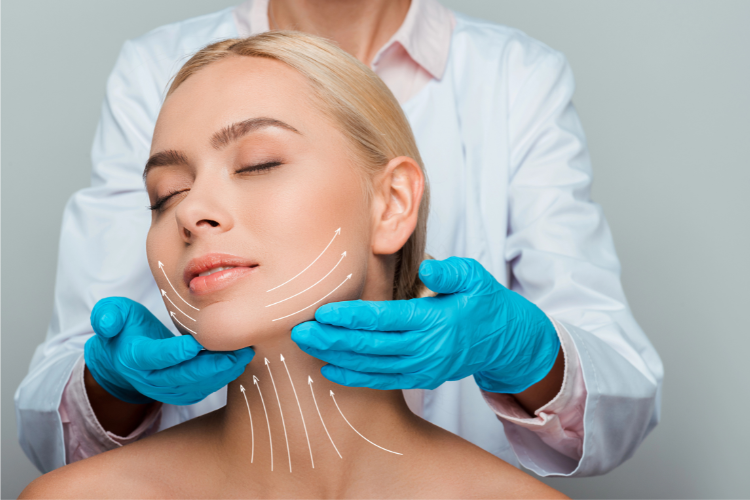Botox, Juvederm, Radiesse and Xeomin: Which Injectable Treatment Is Right for You?
Cosmetic injectables have become the go-to treatment for celebrities and other camera-facing professionals whose livelihood depends on the appearance of their face
Unlike a traditional facelift, injectables offer a minimally invasive approach to facial rejuvenation with relatively zero downtime.
Another reason people choose injectables is that the results aren’t permanent. You can get progressive ‘tweakments’ to address issues as they arise, and if you’re not happy with the results, the filler will eventually dissolve anyway.
Here’s the thing to remember: Injectable anti-aging treatments are not all the same. They’re each made from different substances, they work differently, and they’re better at targeting certain areas of the face than others.
Selecting the correct treatment is paramount to getting the look you want. For one, make sure you get guidance from a licensed professional at a medical spa, like a dermatologist, who has extensive experience with applying fillers.
To give you a little more information before you go to your consultation appointment, this discussion explores the mechanisms, applications, and comparative advantages of the beauty world’s four prominent injectables: Botox, Xeomin, Juvederm, and Radiesse.
Botox vs Juvederm vs Radiesse vs Xeomin
1. Botox (Botulinum Toxin Type A)
How Botox Works:Botox is a toxic substance that temporarily paralyzes neuromuscular transmission. This causes the targeted facial muscles to relax, giving a more youthful aesthetic. Botox is considered the gold standard for injectable anti-aging treatments for its ability to drastically reduce the appearance of dynamic wrinkles, aka lines that come from repetitive muscle contractions.
Where It Works Best:The most common treatment areas include forehead lines, crow’s feet, and glabellar frown lines. Botox is also used in other areas of the body to treat migraines, overactive sweat glands, and more.
The Procedure:Botox is an in-and-out visit to the medical with minimal invasiveness. The results are typically visible within a few days after treatment. Potential side effects resolve quickly and may include mild swelling, bruising, or temporary ptosis.
Duration of Effects:The effects of Botox generally last for three to four months, but can last longer in some cases. However, Botox treatments require periodic maintenance to maintain the aesthetic, so plan on circling back with your med spa every few months or so.
2. Xeomin (Botulinum Toxin Type A – Purified Formula)
How Xeomin Works:Xeomin provides nearly identical results to Botox and even works through the same mechanism. The difference is in the substance itself. Unlike Botox, Xeomin is a more purified formulation without accessory proteins. This helps mitigate the risk of antibody formation, potentially enhancing its efficacy in people who’ve developed resistance to Botox.
Where It Works Best:Xeomin shares similar applications with Botox, primarily targeting dynamic wrinkles in the forehead and crow’s feet.
The Procedure:Also like Botox, Xeomin injections are an in-and-out procedure that won’t take up your whole day. Visible results generally manifest within a few days after. Temporary swelling or bruising are common, but typically resolve in a few days, sometimes even a few hours.
Duration of Effects:Xeomin has the same shelf life as Botox: three to four months. Xeomin also requires continuous maintenance treatments to sustain its efficacy. At the end of the day, this is arguably the best choice for patients with resistance to Botox.
3. Juvederm (Hyaluronic Acid Filler)
How Juvederm Works:Juvederm, a hyaluronic acid-based dermal filler, is a powerful anti-aging treatment. This filler works by replenishing volume and hydration within the skin. Juvederm is available in various formulations, including Juvederm Ultra, Voluma, and Vollure, each tailored to specific aesthetic objectives.
Where It Works Best:Juvederm is primarily used to treat loss of volume, and the mechanism by which Juvederm and other hyaluronic acid fillers work makes them highly effective at treating many different areas. Juvederm can effectively address deep wrinkles in the forehead and is also frequently used to enhance lip volume. It’s also commonly recommended over Botox to help restore volume in the cheeks and nasolabial folds.
The Procedure:The same goes for a Juvederm treatment as any other injectable like Botox. Potential side effects are typically transient and include temporary swelling, erythema, or nodule formation. Results can usually be seen within just a few days.
Duration of Effects:The duration of effects from Juvederm and other hyaluronic acid fillers is longer than Botox. Results last from six to 18 months, depending on the specific formulation. Remember that different formulas target different areas and objectives, but at the end of the day, the mechanism is the same for restoring volume.
4. Radiesse (Calcium Hydroxylapatite Filler)
How Radiesse Works:Radiesse, a calcium hydroxylapatite-based dermal filler, stimulates neocollagenesis while providing immediate increase in volume. The microspheres in Radiesse work by forming a scaffold that stimulates collagen production sustainably over time. Therefore, the effects of Radiesse are more gradual and long-lasting. This injectable helps improve skin texture and firmness, together with a lifting effect, restoring youthful contours.
Where It Works Best:Radiesse works best at addressing deeper folds, restoring cheek volume, defining the jawline, and rejuvenating the hands.
The Procedure:Like the other injectable treatments on this list, Radiesse is a quick in-and-out procedure at your local med spa. Potential side effects again include swelling, bruising, and the possibility of nodule formation
Duration of Effects:Radiesse lasts longer than Botox and Juvederm, making it an attractive filler for those who want more gradually revitalizing results over time. Results typically last from twelve to eighteen months.
Which Injectable Is Best for Which Situation(s)?
As you can see from the above breakdown of Botox vs Xeomin vs Juvederm vs Radiesse, different injectables are designed for different outcomes.
Selecting the appropriate injectable treatment necessitates a comprehensive understanding of both individual aesthetic goals and facial anatomy, making this a task best suited for an experienced dermatologist or licensed aesthetician.
However, in a nutshell, here’s a list of the most common situations and which injectable is best for effective rejuvenation treatment:
- Wrinkle Prevention & Muscle Relaxation - Botox or Xeomin are best for reduction of dynamic wrinkles through temporary muscle relaxation, especially on the forehead.
- Lip Augmentation & Soft Facial Volume Restoration - Juvederm is preferred for enhancing lip volume and restoring soft facial volume below the level of crow’s feet.
- Deep Fold Reduction, Jawline Definition & Collagen Stimulation - Radiesse is recommended for correcting deep folds, defining the jawline, and stimulating collagen production.
- Long-Lasting, Natural Results - A combination approach, utilizing both dermal fillers and botulinum toxin, may yield optimal, natural-looking results. Of all the injectable treatments on this list, Radiesse offers the longest-lasting, most gradual results.
Final Thoughts & Consultation
The good news is that because injectable treatments can address a spectrum of issues, there’s a facial rejuvenation solution for everyone.
Remember that a consultation with a licensed medical professional is necessary to determine the most effective injectable treatment(s) for you. We’ll conduct a thorough assessment of facial anatomy and get to know your aesthetic goals to develop a personalized plan.
Schedule a consultation at Elite Medical Spa of Lakewood Ranch today to get started.




